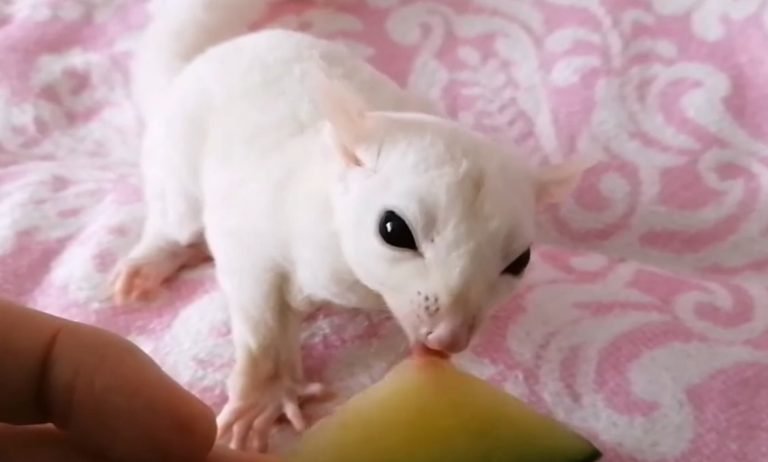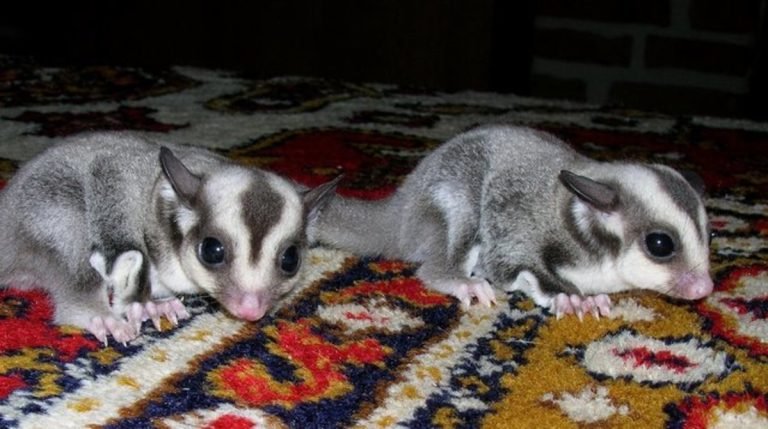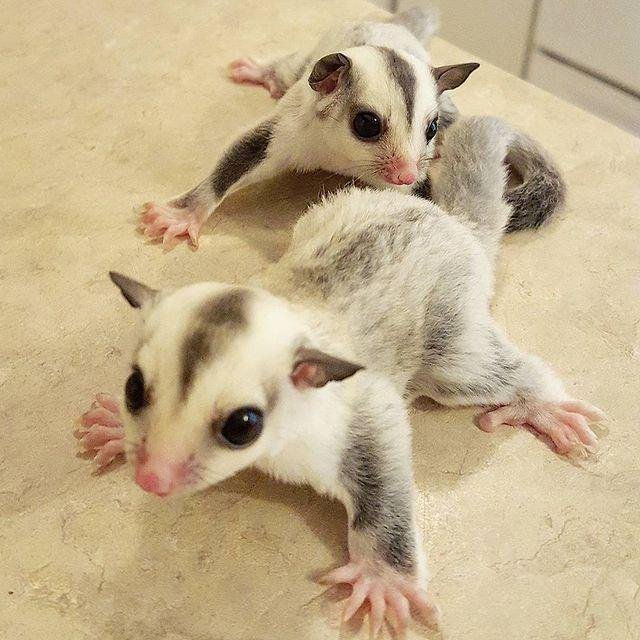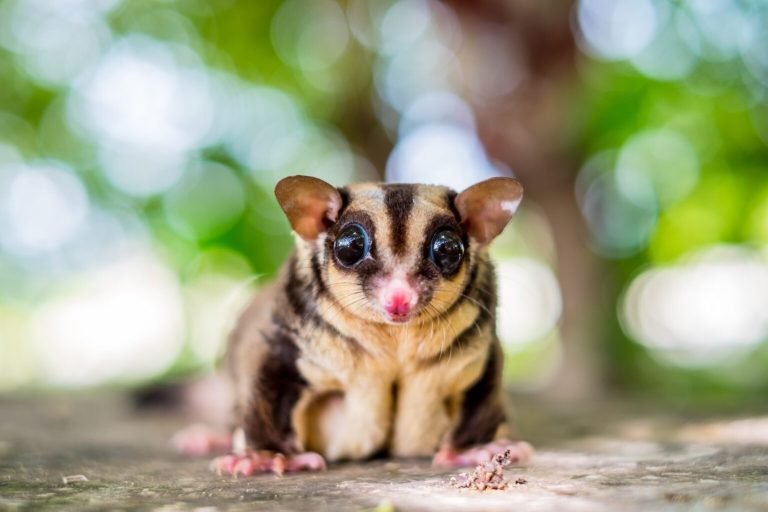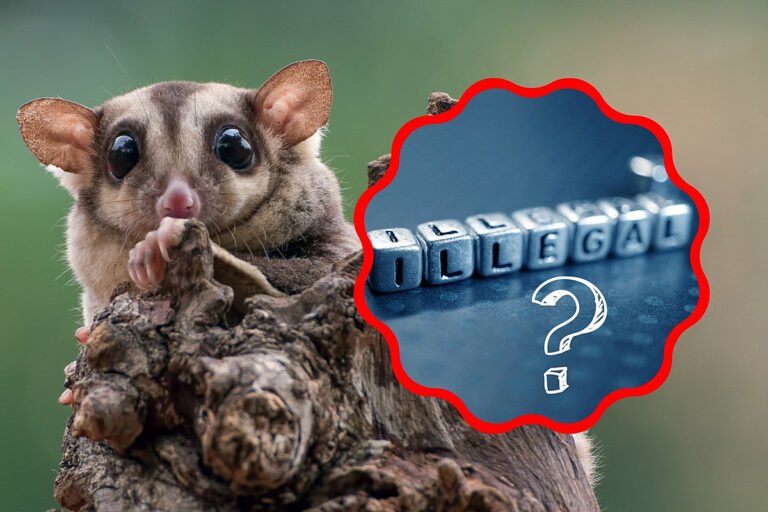Sugar Glider Cage Wire VS Plastic Habitat Guide
Are you a sugar glider enthusiast looking to create the perfect living space for your furry friends? Choosing between wire and plastic habitats can be a tough decision. But fear not! In this guide, we’ll break down the pros and cons of each option, helping you make an informed choice.
Creating the right cage setup is crucial for your sugar gliders’ well-being. These unique pets require a suitable environment that caters to their specific needs. We’ll provide you with all the necessary information to ensure your sugar gliders thrive in their new home. In this blogpost, we will discuss sugar glider cage wire vs plastic habitat guide.
From understanding the advantages and disadvantages of wire and plastic habitats to selecting the most appropriate one, we’ve got you covered. So get ready to explore this comprehensive guide and discover how you can provide an ideal living environment for your adorable sugar gliders.
Let’s dive in and unleash the secrets behind choosing the perfect habitat for these extraordinary creatures!
The Importance of Proper Sugar Glider Cage Setup:
A well-designed cage setup is crucial for the physical and mental well-being of sugar gliders. Here’s why:
- Promotes Physical and Mental Well-being: A properly designed cage provides ample space for sugar gliders to move around, exercise, and engage in their natural behaviors. It allows them to climb, glide, and explore, which are essential for their overall health.
- Crucial Ventilation and Temperature Control: Sugar gliders are sensitive to temperature changes. A suitable cage should have proper ventilation to ensure fresh air circulation while maintaining a stable temperature. This helps prevent respiratory issues and ensures their comfort.
- Prevents Stress-related Issues: Sugar gliders are social animals that thrive in a safe and comfortable environment. A well-designed cage with appropriate hiding spots, perches, and toys helps reduce stress levels. It creates a sense of security, preventing behavioral problems like excessive grooming or self-mutilation.
Creating an ideal habitat for sugar gliders involves considering their specific needs. Providing branches or ropes for climbing, nesting materials for comfort, and different levels or platforms within the cage can enhance their quality of life.
Remember to monitor the cleanliness of the cage regularly by removing waste promptly and cleaning it thoroughly on a routine basis. Placing the cage away from direct sunlight or drafts will help maintain a stable environment.
By prioritizing these aspects in your sugar glider’s living space, you can ensure they lead happy and healthy lives while enjoying their natural behaviors.
Optimal Cage Requirements for Happy and Healthy Sugar Gliders:
To ensure the happiness and health of your sugar gliders, it is crucial to provide them with an optimal cage environment. Here are some key considerations when it comes to choosing the right cage for your adult sugar gliders:
- Ample Space: Sugar gliders are active creatures that love to move, glide, and exercise. It is essential to provide them with enough space in their cage to accommodate their natural behaviors. Opt for a cage that offers plenty of room for them to stretch their wings and explore.
- Multiple Levels and Platforms: To mimic their natural habitat, include multiple levels, platforms, and perches within the cage. This will encourage your sugar gliders to climb, jump, and play just like they would in the wild. Having different levels also allows them to have separate areas for eating, sleeping, and playing.
- Easy Access: Make sure that food, water, sleeping areas, and toys are easily accessible within the cage. This ensures that your sugar gliders can meet their basic needs without any difficulty. Consider placing food dishes at different heights or providing hanging pouches for sleeping.
By following these guidelines when selecting a cage for your sugar gliders, you can create an environment that promotes their well-being and happiness. Remember to prioritize ample space, multiple levels and platforms, as well as easy access to essentials within the cage. Your adult sugar gliders will thrive in this thoughtfully designed habitat!
Choosing the Right Size and Material for Your Sugar Glider Cage:
There are a few important factors to consider. The size of your sugar glider colony is crucial in determining the appropriate cage size. Providing enough space for your gliders ensures their comfort and well-being.
Wire cages offer better airflow compared to plastic cages. This is important as sugar gliders require proper ventilation to maintain a healthy environment. Wire cages allow for easy climbing and exploration due to their vertical space.
On the other hand, plastic cages have their advantages as well. They are generally easier to clean and maintain since they have a solid surface that can be wiped down easily. This makes them a convenient option for busy pet owners.
When choosing between wire and plastic, it’s essential to strike a balance between durability, ease of maintenance, and budget constraints. Consider your own preferences as well as the needs of your sugar gliders before making a decision.
To help you make an informed choice, here are some key points to keep in mind:
- Consider the size of your sugar glider colony when selecting a cage.
- Wire cages offer better airflow while plastic cages are easier to clean.
- Balance between size, material durability, ease of maintenance, and budget constraints.
By carefully considering these factors, you can choose the right size and material for your sugar glider cage that provides optimal comfort and safety for your furry friends.
Ensuring Safety: Key Considerations for Sugar Glider Cage Selection

Safety should be your top priority. Here are some key considerations to keep in mind:
- Avoid cages with large gaps or openings that can trap or injure sugar gliders: Sugar gliders are small and agile creatures, so it’s crucial to select a cage with wire or plastic mesh that has small enough gaps to prevent them from escaping or getting stuck. Look for cages specifically designed for sugar gliders or small animals to ensure the appropriate spacing.
- Opt for non-toxic materials that won’t harm them if chewed on: Sugar gliders have a natural instinct to chew, so it’s essential to choose a cage made from non-toxic materials. Avoid cages with painted surfaces that may contain harmful chemicals. Instead, consider stainless steel or powder-coated wire cages, as they are durable and safe for your furry friends.
- Check for secure latches or locks to prevent escapes: Sugar gliders are known for their ability to escape even seemingly secure enclosures. To avoid any Houdini acts, make sure the cage you select has sturdy latches or locks that cannot be easily manipulated by these curious critters. This will help keep them safely contained within their habitat.
By considering these safety precautions when selecting a sugar glider cage, you can provide a secure environment where your pets can thrive without any unnecessary risks.
Remember, keeping your sugar gliders safe is of utmost importance. Choose a cage with appropriate gap sizes, non-toxic materials, and secure latches to ensure their well-being and prevent any potential accidents.
Now you’re ready to create an ideal home for your adorable sugar glider companions!
A Complete Guide to Sugar Glider Cages: Size, Safety, and Materials
Determine the ideal cage dimensions based on the number of sugar gliders you have.
- Consider the number of sugar gliders you have when choosing a cage size.
- Ensure enough space for them to move, play, and exercise comfortably.
- The recommended minimum cage size for two sugar gliders is 24 inches by 24 inches by 36 inches.
- If you have more gliders, opt for a larger enclosure to accommodate their needs.
Explore different materials like stainless steel, powder-coated wire, or high-quality plastic.
- Stainless steel cages offer durability and are resistant to rusting.
- Powder-coated wire cages provide ventilation and visibility while being easy to clean.
- High-quality plastic habitats may be suitable for temporary use or travel purposes.
Prioritize safety features such as escape-proof doors and predator protection.
- Look for cages with secure latches and locks to prevent accidental escapes.
- Choose cages with narrow bar spacing to ensure your sugar glider cannot squeeze through.
- Consider predator protection features like mesh coverings or reinforced walls.
Creating an Enriching Environment: Toys, Branches, and Nest Pouches for Sugar Gliders:
Sugar gliders, also known as sugar bears, are social animals that require a stimulating environment to thrive. To ensure their well-being and happiness, it’s important to provide them with a variety of toys, branches or perches for climbing and exercise, as well as cozy nest pouches where they can rest and feel secure.
- Toys: Offering a range of wooden toys will keep your gliders entertained and engaged. These toys stimulate their natural instincts and prevent boredom. You can find suitable options at your local pet store or even make your own using safe materials.
- Branches or Perches: Sugar gliders love to climb and explore their surroundings. Providing branches or perches in their cage allows them to satisfy this instinctive behavior while getting the exercise they need. Make sure these items are securely attached to the cage to ensure safety.
- Nest Pouches: Cozy nest pouches serve as essential retreats for sugar gliders. They provide a comfortable space where gliders can rest, sleep, and feel secure during the day. Consider using nesting boxes or cloth pouches specifically designed for sugar gliders.
Creating an enriching environment for your sugar gliders involves more than just providing toys, branches, and nest pouches. It’s crucial to pay attention to other aspects such as bedding, food choices, cleaning routines, bonding activities with your pets, and maintaining an appropriate social environment.
By following these guidelines and incorporating these accessories into your sugar glider’s habitat setup, you’ll be ensuring that they have everything they need for a happy and fulfilling life in captivity. Remember that each sugar glider is unique in its preferences; observe their behavior closely to understand what works best for them.
Now that you know how important it is to create an enriching environment for your sugar gliders, let’s move on to the next section and explore the best diet options for these adorable creatures.
Expert Insights from the Sugar Glider Cage Wire vs Plastic Habitat Guide:
After reviewing the Sugar Glider Cage Wire vs Plastic Habitat Guide, we have gathered some expert insights to help you make an informed decision for your sugar glider’s habitat. Here are the key takeaways:
- The Importance of Proper Sugar Glider Cage Setup: Creating a suitable environment is crucial for the well-being of your sugar gliders. A properly set up cage ensures their safety, comfort, and overall happiness.
- Optimal Cage Requirements for Happy and Healthy Sugar Gliders: Sugar gliders require spacious cages that allow them to exercise and explore. It is recommended to provide vertical space, multiple levels, and ample room for toys and accessories.
- Choosing the Right Size and Material for Your Sugar Glider Cage: Selecting the appropriate size is essential as it directly impacts your pets’ quality of life. Considering materials such as wire or plastic should be based on durability, ease of cleaning, and safety.
- Ensuring Safety: Key Considerations for Sugar Glider Cage Selection: The safety of your sugar gliders should be a top priority when choosing a cage. Pay attention to bar spacing, secure latches, absence of sharp edges or toxic materials, and proper ventilation.
- A Complete Guide to Sugar Glider Cages: Size, Safety, and Materials: For a comprehensive understanding of sugar glider cages, refer to our guide which covers various aspects including size recommendations based on the number of gliders you have, safe materials options like stainless steel or PVC-coated wire mesh.
- Creating an Enriching Environment: Toys, Branches, and Nest Pouches for Sugar Gliders: To keep your sugar gliders mentally stimulated and entertained in their cage, consider providing toys like hanging pouches or ropes along with branches for climbing opportunities.
Now that you have gained valuable insights from our guide on Sugar Glider Cage Wire vs Plastic Habitat, it’s time to take action. Ensure your sugar gliders’ well-being by providing them with a suitable and safe cage that meets their needs.
FAQs
1.How much space do sugar gliders need in their cage?
Sugar gliders require a minimum of 24″ x 24″ x 36″ of vertical space for one or two gliders. However, the more space you can provide, the better.
2.Can I use a plastic cage for my sugar gliders?
While some plastic cages may be suitable for temporary use or travel, they are generally not recommended as a permanent habitat. Sugar gliders have strong teeth and can chew through plastic easily.
3.What bar spacing is safe for sugar glider cages?
The ideal bar spacing should be no more than half an inch (1.27 cm) wide to prevent escape or injury. Wider gaps may allow sugar gliders to squeeze through or get stuck.
4.Are there any specific materials I should avoid when choosing a sugar glider cage?
Yes, it is important to avoid cages made from galvanized wire since the zinc coating can be toxic to sugar gliders if ingested. Opting for stainless steel or PVC-coated wire mesh is safer.
5.Can I keep multiple sugar gliders in the same cage?
Yes, sugar gliders are social animals and thrive when kept in pairs or small groups. Just ensure that the cage size is appropriate and provides enough space for each individual’s comfort and activities.


